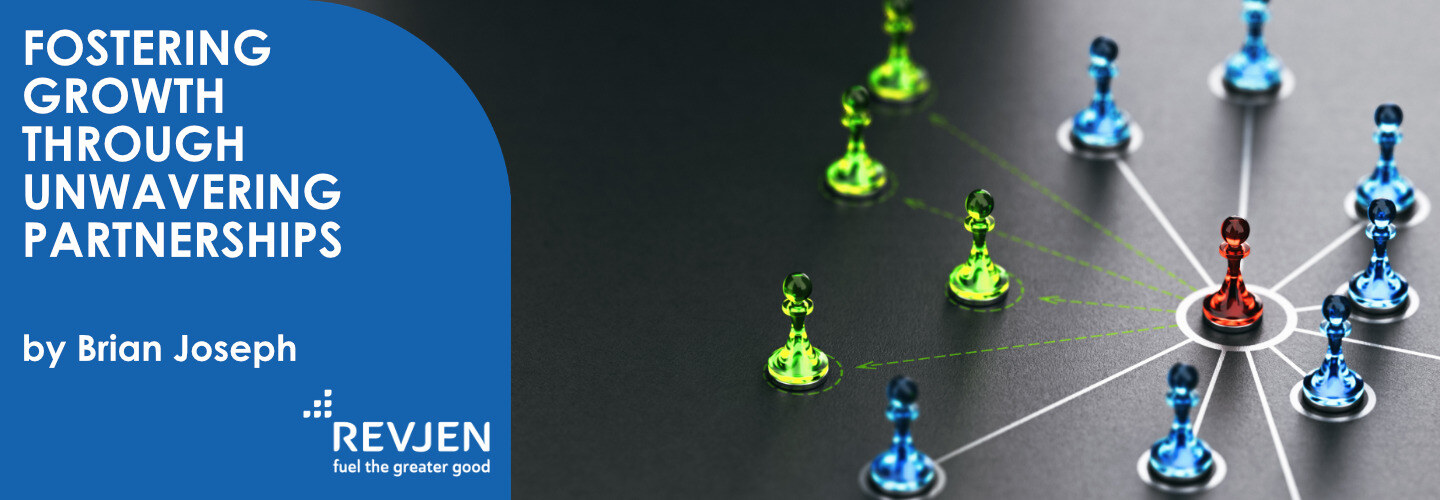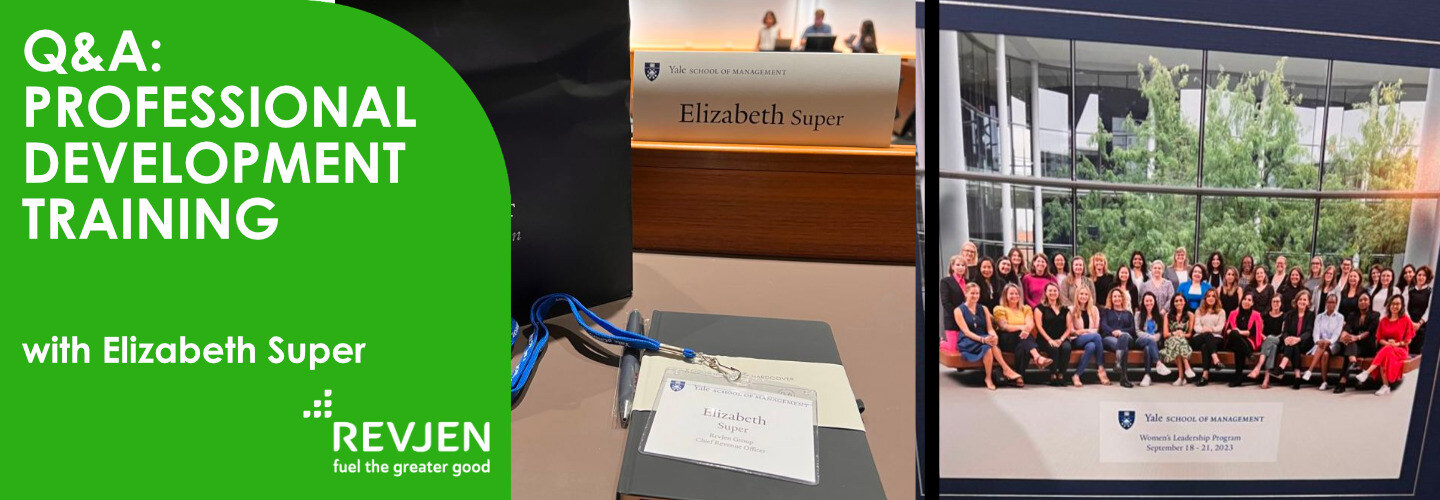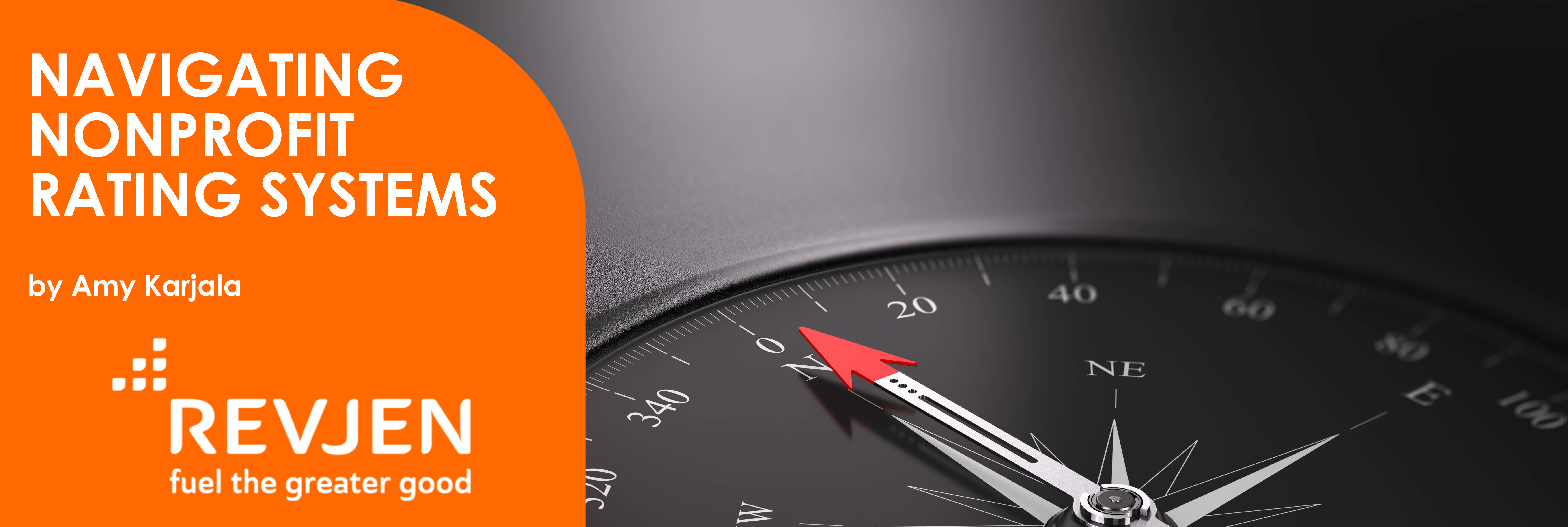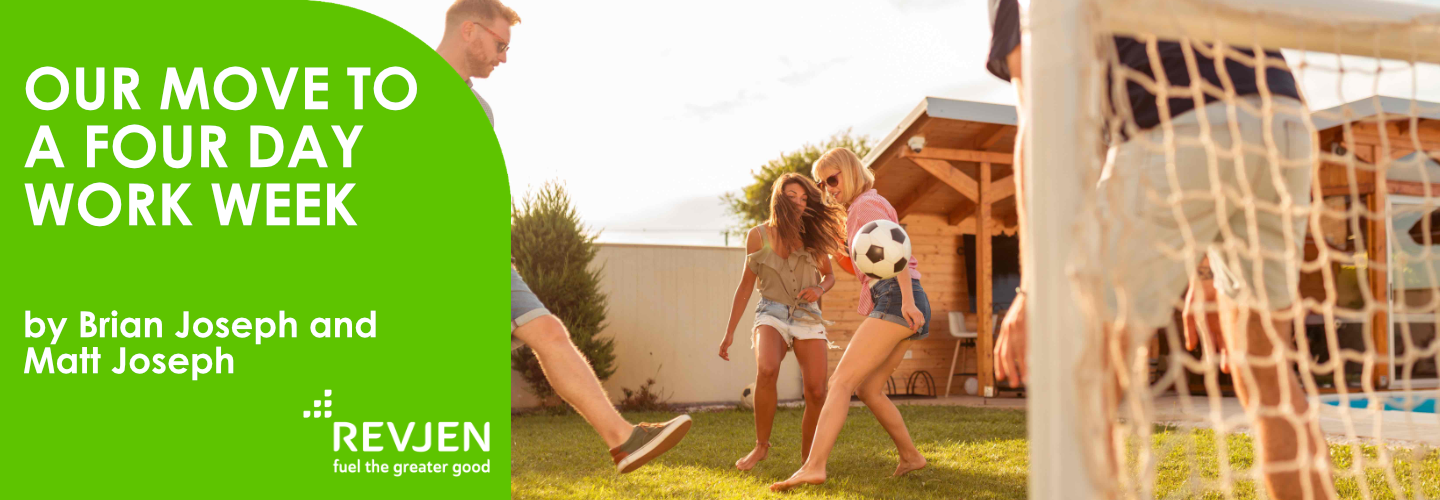
RevJen Blog
Posts about:
RevJen


Q&A with RevJen’s Chief Revenue Officer on Recent Professional Development Training
We sat down with RevJen’s Chief Revenue Officer, Elizabeth Super, who completed a week-long professional development training through the Women’s Leadership Program...

Embracing Innovation: The Scientist Mindset
I’ve been around innovation as an idea for most of my career, most of the time by accident. The idea of a scientist mindset and changing the “way we do things...

Unveiling Resilience: Leading While Feeling Isolated
Still new to the nonprofit sector, I am increasingly finding that, in the expansive realm of it, leaders often confront a sense of isolation, a factor that hampers the growth and effectiveness of both individuals and organizations. The landscape in which nonprofit entities operate is fraught with challenges distinct from their profit-driven counterparts. In my work with leaders from many sectors across the globe, the feeling of it being “alone at the top” is common. However, it is felt much more profoundly in the nonprofit sector due to the mission focus and the lesser investment in professional development training and support for its leaders. However, I have a hypothesis that centers on the idea that this prevailing isolation can be nudged to a healthier place. I’ve seen it done in my own personal experience and through my experience coaching and supporting other leaders, through a profound understanding and bolstering of leadership resilience. So, what follows is my experience for you to take or leave or build on. Whichever suits your context. I’d love to hear from you.
Firstly, to definitions. Often, the essence of resilience lies in the capacity to bounce back from adversities, an indispensable trait for nonprofit leaders who often navigate through a sea of operational hurdles and limited resources. Research from the phycologists states that resilience isn’t a rare ability we luck upon or are born with; in fact, it can be honed and developed, with potential dividends in mitigating feelings of isolation and that irrepressible feeling of being burned out.
The Impact of Resilience
A study in the National Library of Medicine divulged that leaders with higher resilience levels tend to experience lower stress levels, thus positing resilience as a buffer against the solitude that often encircles leadership roles in nonprofits. In fact, the entire quality of life and overall scores were positively associated with higher resilience. Sounds great, doesn’t it?! Never that easy, of course. Data is contextual, and a bunch of those leaders have since felt times of resilience that is down. It isn’t a thing to conquer once and be done with it for life. It takes constant work (I know – you have enough of that, but I’m just being real!).
Resilience isn’t merely an individual ‘thing’ but extends its nasty energy-sapping tendrils into the organizational fabric, too. Which only adds to a leader’s workload, because you need to manage that, too. But there is value in managing it. A McKinsey study found that organizations that enable leaders to focus and build resilience see a 21 percent improvement in work effectiveness, a 46 percent improvement in employee engagement, and a 45 percent improvement in well-being. This enables these leaders to effectively handle the challenges encompassing financial pressures, workforce attrition, and donor engagement. This ripple effect of leadership resilience underscores its monumental impact not just on the leader but on the overarching organizational ecosystem.
Making it Personal
The pathway to cultivating resilience among nonprofit leaders isn’t a silver bullet. It is individual and contextual. There are lots of things we can do to help build our own resilience to overcome times of feeling isolated or burned out. However, networks of peer support is always going to help you lift out of it, regardless of the situation. Peers know what we are going through. They’ve been there, and they can share their experience to help us feel seen, understood, and optimistic. This is just like what our members get in their R-Squared groups.
A few exercises I’ve seen leaders try to build resilience is to focus on allowing the bodies machinery to do its thing. We often disguise the feeling of burnout as ‘fatigue’ or ‘busy-ness’, when in fact it’s actually a culmination of physical, emotional, and cognitive energy depletion that causes our resilience to drop. First, you need to identify what impacts your resilience capital. Have a coffee with yourself at the start and end of the week. No agenda. No devices. No paper. Just let the brain process and reflect. At the end of these 15mins or so, write down a few reflections of where your brain took you. You’ll soon see a trend of who are your resiliency vampires.
Next is to find what can reenergize you. When you’re having one of those days where everything feels good, you know the ones, when you can just keep going and everything is working out, and it feels like you’re winning. Take a moment and reflect on what has led up to that. Again, you’ll find threads over time that will enable you to build your resiliency action plan!
At the end of the day, nothing beats having peers who know what you’re feeling and what you’re facing. The most powerful parts of our nonprofit peer groups is hearing the relief of realization that hits leaders when they are suddenly no longer alone. There are others there waiting to meet your moments with support and advice and experiences to learn from. Find yours, and those headwinds may just start to turn.

Leading Through Burnout
Leadership is hard
Like, really hard. As leaders we take on the responsibility and accountability of the performance of our organizations and often do it in a way...

Navigating Nonprofit Ratings Systems
At RevJen we focus on some of the key challenges facing nonprofits. One of the biggest of those challenges is financial sustainability. The hamster wheel as it is...

Why we are moving to a 4-day work week
Why we are moving to a 4-day work week
RevJen exists to find solutions to chronic issues in the nonprofit sector, including isolation and burnout. As more and more...
The Power of Partnerships
The Power of Partnerships
Little Meanings.
There’s a story in everything, even the way we sign emails. I used to be that person that signs every email with...
Stanford Social Innovation Review

